Pope Francis to gathering of Christians and Muslims: “Go ahead with courage and through dialogue”
https://vimeo.com/148880588 ITALIAN with ENGLISH subtitles
https://vimeo.com/148880588 ITALIAN with ENGLISH subtitles
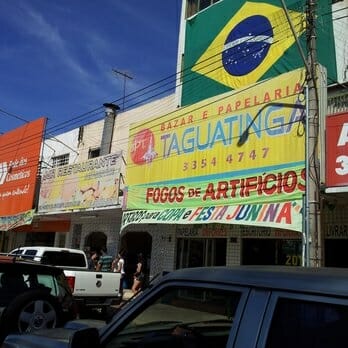
 It is impressive to discover that not only is there no exploitation and unfair competition, but also no play on interest rates. These entrepreneurs, like those who have signed up for an Economy of Communion (EoC) – about a thousand throughout the world – pursue the objective of profits that ensure vitality and continuity to their businesses, and wish to live the ”culture of giving” according to the finalities of the project itself: to help the formation and education of the young generations towards this new mentality. Thus they freely and concretely place a part of their turnover at the service of the project. Socoro and Gomes, Brazilians live in Taguantinga City, in the Federal District. They already had six children when he lost his job because he was an alcoholic. To maintain the family, she worked as a household helper, but earned very little. Left by themselves, the children became so disoriented to the point that the eldest, an adolescent, got involved in drugs. The Focolare came to their aid and offered the boy a job in the Fazenda da Esperança, a rehab community inspired by the spirituality of the Focolare. The family also had to shoulder serious housing problems, since their house was not only a makeshift one but also too small for such a big family. They also risked losing the house since they had stopped paying the person who had given them a loan. They presented this problem to the EoC Commission of their region. After a careful analysis, they were offered a loan to cover the late payments, to be paid back according to their capacity to do so. Meanwhile, Gomes started a small business with gas bottles, but because of his alcoholism was unable to keep up with it. Those were really difficult times for them. In addition to their serious economic difficulties, there were squabbles and lack of dialogue. Amid all this, Gomes suffered a heart attack. Unexpectedly, Socoro was offered a permanent job, as a household helper to a Cardinal, who employed her with a regular contract and a just salary. One day when he went to visit the family, he had an important chat with Gomes, who decided to give up his addiction and change his lifestyle. Later on the EoC Commission also visited them to verify their housing situation, and on that occasion offered to insert them in the Habitaçao project within the EoC framework, which provides for the restructuring or renovation of houses for extremely poor families. «When I was told about this– confided Socoro – I was really moved. I had the sensation that God himself was giving us this possibility.» The renovation work was mostly done by members of the Focolare community, some of them worked from 5.30 am to 7 pm. Now the house has a living room, bathroom, master’s bedroom and one for the boys and another for the girls. Living in a house with these requisites helps its inhabitants to regain their personal dignity. Gomes is completely rehabilitated, and has become another person altogether. The couple’s older daughters are now in university, thanks to a scholarship. «Seeing our daughters so committed to their studies– says Gomes – made me also feel the urge to enroll in a course for adults to obtain a diploma.» Even though he had not studied for 38 years, it was a challenge he wanted to meet. In the class, he learned to overcome his shame for being the oldest among the students. His kindness helped him to achieve his goal. When the results of the exams for the Bank of Brasilia and the Ministry of Tourism were given, he managed to classify among the top 200 and was employed in the bank as a clerk.
It is impressive to discover that not only is there no exploitation and unfair competition, but also no play on interest rates. These entrepreneurs, like those who have signed up for an Economy of Communion (EoC) – about a thousand throughout the world – pursue the objective of profits that ensure vitality and continuity to their businesses, and wish to live the ”culture of giving” according to the finalities of the project itself: to help the formation and education of the young generations towards this new mentality. Thus they freely and concretely place a part of their turnover at the service of the project. Socoro and Gomes, Brazilians live in Taguantinga City, in the Federal District. They already had six children when he lost his job because he was an alcoholic. To maintain the family, she worked as a household helper, but earned very little. Left by themselves, the children became so disoriented to the point that the eldest, an adolescent, got involved in drugs. The Focolare came to their aid and offered the boy a job in the Fazenda da Esperança, a rehab community inspired by the spirituality of the Focolare. The family also had to shoulder serious housing problems, since their house was not only a makeshift one but also too small for such a big family. They also risked losing the house since they had stopped paying the person who had given them a loan. They presented this problem to the EoC Commission of their region. After a careful analysis, they were offered a loan to cover the late payments, to be paid back according to their capacity to do so. Meanwhile, Gomes started a small business with gas bottles, but because of his alcoholism was unable to keep up with it. Those were really difficult times for them. In addition to their serious economic difficulties, there were squabbles and lack of dialogue. Amid all this, Gomes suffered a heart attack. Unexpectedly, Socoro was offered a permanent job, as a household helper to a Cardinal, who employed her with a regular contract and a just salary. One day when he went to visit the family, he had an important chat with Gomes, who decided to give up his addiction and change his lifestyle. Later on the EoC Commission also visited them to verify their housing situation, and on that occasion offered to insert them in the Habitaçao project within the EoC framework, which provides for the restructuring or renovation of houses for extremely poor families. «When I was told about this– confided Socoro – I was really moved. I had the sensation that God himself was giving us this possibility.» The renovation work was mostly done by members of the Focolare community, some of them worked from 5.30 am to 7 pm. Now the house has a living room, bathroom, master’s bedroom and one for the boys and another for the girls. Living in a house with these requisites helps its inhabitants to regain their personal dignity. Gomes is completely rehabilitated, and has become another person altogether. The couple’s older daughters are now in university, thanks to a scholarship. «Seeing our daughters so committed to their studies– says Gomes – made me also feel the urge to enroll in a course for adults to obtain a diploma.» Even though he had not studied for 38 years, it was a challenge he wanted to meet. In the class, he learned to overcome his shame for being the oldest among the students. His kindness helped him to achieve his goal. When the results of the exams for the Bank of Brasilia and the Ministry of Tourism were given, he managed to classify among the top 200 and was employed in the bank as a clerk.
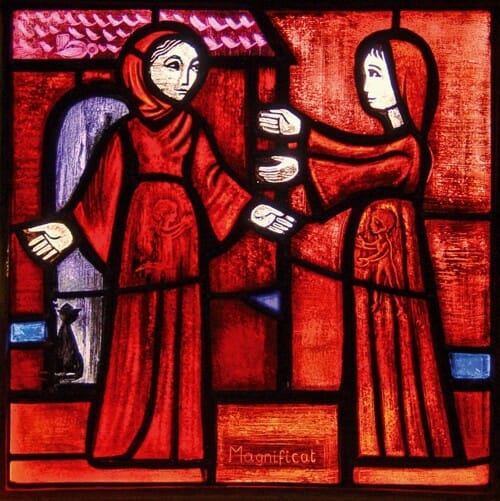
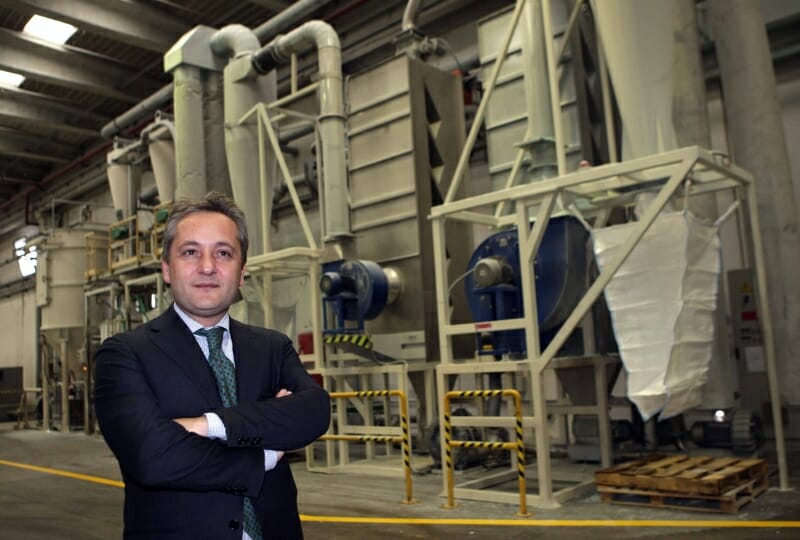
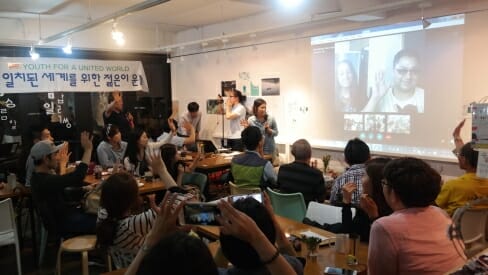
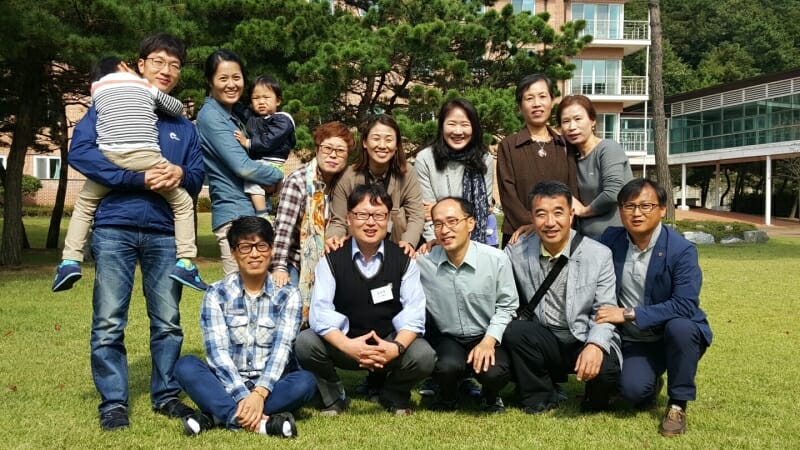 In 2015, in conjunction with the Synod on the Family, the activities certainly could not have gone by without some exclusive event organised by the Focolare families that are very active in South Korea. In this time of crisis in family relationships, in the Chong Hasang Education Center of Seoul, and simultaneously in Pohang, the 2-4 October weekend was dedicated to a ”School of forgiveness for couples” held for 120 couples. In the end, the couples all agreed on the need for true dialogue between spouses. “Instead of burying pettiness and hurt feelings – a couple said – we have to face the situation with courage, discuss it, and ask and receive pardon.” It was a dialogue we experimented on and which they now believe to be essential to renew, and be able to communicate to each other, the things they are unable to say.
In 2015, in conjunction with the Synod on the Family, the activities certainly could not have gone by without some exclusive event organised by the Focolare families that are very active in South Korea. In this time of crisis in family relationships, in the Chong Hasang Education Center of Seoul, and simultaneously in Pohang, the 2-4 October weekend was dedicated to a ”School of forgiveness for couples” held for 120 couples. In the end, the couples all agreed on the need for true dialogue between spouses. “Instead of burying pettiness and hurt feelings – a couple said – we have to face the situation with courage, discuss it, and ask and receive pardon.” It was a dialogue we experimented on and which they now believe to be essential to renew, and be able to communicate to each other, the things they are unable to say. 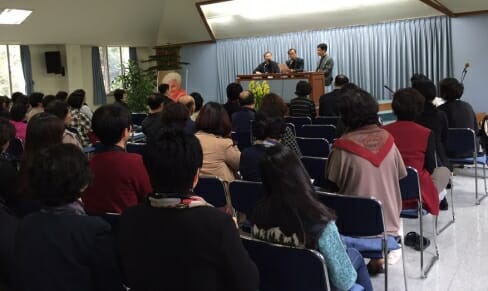 Also the people involved in the parish – 119 of them from all the dioceses of South Korea – had their moment of growth. Accompanied by 18 priests and five religious, on 26 October they reflected on the ”Parish, home of friendship, school of communion.” It was a day lived in the spirituality of unity to contribute to the quality of service to the parish, in full communion of the laity amongst themselves and with the priests, beyond all differences in roles, age, and viewpoints. The testimonials confirmed that misunderstanding and conflicts can be overcome through mutual charity, and unity be reached through reconciliation. All of this was to the benefit of the parish community.
Also the people involved in the parish – 119 of them from all the dioceses of South Korea – had their moment of growth. Accompanied by 18 priests and five religious, on 26 October they reflected on the ”Parish, home of friendship, school of communion.” It was a day lived in the spirituality of unity to contribute to the quality of service to the parish, in full communion of the laity amongst themselves and with the priests, beyond all differences in roles, age, and viewpoints. The testimonials confirmed that misunderstanding and conflicts can be overcome through mutual charity, and unity be reached through reconciliation. All of this was to the benefit of the parish community.  “A day at the cafe for Nepal.” Objective: to raise funds for Ramjung where there had been that terrible earthquake last April. This was the invitation launched by the Youth for a united world on Saturday, 5 September, in a bar in Seoul. The key moment was the video-connection with three other Asian cities, Katmandu, Mumbai and precisely India, from which came the story of those who managed to send aid to Nepal: doing part-time jobs, and organizing dinners and concerts. One of them was Natasha who despite being jobless donated 5,000 rupees, and after that experienced the gospel’s hundredfold: three days later she was hired by a company. It has now become a tradition. In a dining hall reserved for the deputies of the Korean parliament, the Focolare held, for those who wished to attend, the monthly Social Forum for unity that reached its 32nd edition on 17 September. In that session they presented the “Rainbow Dream Project,” an educational, recreational program for schools that started out from an integral vision of the person (white, as the colour of light) intercepting the seven main educational aspects (corresponding to the seven colours of the rainbow). Each colour was matched with a behavioural attitude which in turn embraced multifaceted dimensions, while keeping a unitary focus that adjusts to the specific situations the student has to face. The project also provided a community reading session of a phrase from the Gospel at the start of each month, which alternated with the sharing of concrete experiences on this phrase, broadcasted on radio. This project has been ongoing in the Maegoe High School of Chungbuk since 2009. At that time, someone who was worried about the new assignment as Dean, had suggested to Fr. Matteo Park to introduce the spirituality of unity in the school syllabus. Saturday, 28 November saw the launch of the “Bring carbon” Project of the Youth for a united world. Carbon and fuel were donated to the elderly abandoned people living alone, to heat up their homes. But it is just an excuse to touch base, and to arouse awareness in the youth. “Open the taps – one of them surprisingly wrote – and there is abundant hot water running; press a button and the heater warms up the whole house, and you can stretch out under a comforter and watch TV. This was what I used to consider as an ordinary winter day. And I thought that it was but natural for everyone … but now I know that there is someone next to me who needs my love…..”
“A day at the cafe for Nepal.” Objective: to raise funds for Ramjung where there had been that terrible earthquake last April. This was the invitation launched by the Youth for a united world on Saturday, 5 September, in a bar in Seoul. The key moment was the video-connection with three other Asian cities, Katmandu, Mumbai and precisely India, from which came the story of those who managed to send aid to Nepal: doing part-time jobs, and organizing dinners and concerts. One of them was Natasha who despite being jobless donated 5,000 rupees, and after that experienced the gospel’s hundredfold: three days later she was hired by a company. It has now become a tradition. In a dining hall reserved for the deputies of the Korean parliament, the Focolare held, for those who wished to attend, the monthly Social Forum for unity that reached its 32nd edition on 17 September. In that session they presented the “Rainbow Dream Project,” an educational, recreational program for schools that started out from an integral vision of the person (white, as the colour of light) intercepting the seven main educational aspects (corresponding to the seven colours of the rainbow). Each colour was matched with a behavioural attitude which in turn embraced multifaceted dimensions, while keeping a unitary focus that adjusts to the specific situations the student has to face. The project also provided a community reading session of a phrase from the Gospel at the start of each month, which alternated with the sharing of concrete experiences on this phrase, broadcasted on radio. This project has been ongoing in the Maegoe High School of Chungbuk since 2009. At that time, someone who was worried about the new assignment as Dean, had suggested to Fr. Matteo Park to introduce the spirituality of unity in the school syllabus. Saturday, 28 November saw the launch of the “Bring carbon” Project of the Youth for a united world. Carbon and fuel were donated to the elderly abandoned people living alone, to heat up their homes. But it is just an excuse to touch base, and to arouse awareness in the youth. “Open the taps – one of them surprisingly wrote – and there is abundant hot water running; press a button and the heater warms up the whole house, and you can stretch out under a comforter and watch TV. This was what I used to consider as an ordinary winter day. And I thought that it was but natural for everyone … but now I know that there is someone next to me who needs my love…..”
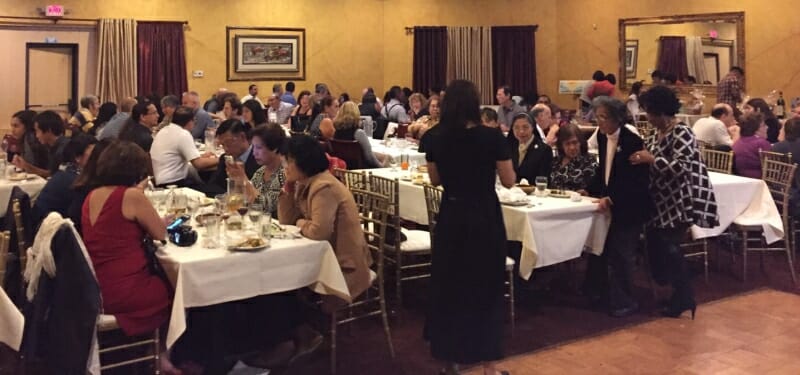
All of us here are involved in helping refugees to integrate in our coundry,” they write from Germany. “Some of us give German lessons, some provide lodging, some give of their time to be with the refugees. We are currently waiting for the arrival of 9 unaccompanied minors from Syria and Afghanistan. They’ll live for six months at our centre in Ottmaring where they will be assisted by social workers from the city.” 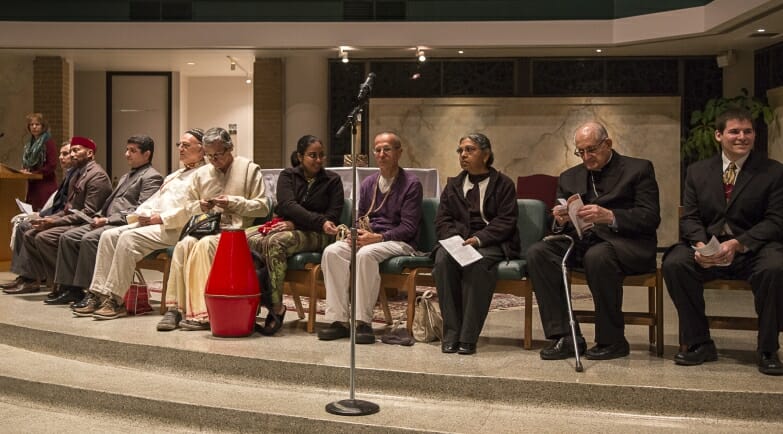 “Here in Dallas,” they write from Texas, “we held a peace march to raise funds for Syrian refugees.” “In Houston “We got together for a day of team building. With games, work groups, and so forth we learned how to be a team. On November 22 we held an interreligious prayer for peace. It was attended by Jews, Muslims, Hindus and Christians. The Archbishop also joined us.”
“Here in Dallas,” they write from Texas, “we held a peace march to raise funds for Syrian refugees.” “In Houston “We got together for a day of team building. With games, work groups, and so forth we learned how to be a team. On November 22 we held an interreligious prayer for peace. It was attended by Jews, Muslims, Hindus and Christians. The Archbishop also joined us.”  From California they tell us that the benefit dinner for refugees from the Middle East included a hundred people from different cultures and Churches. After praying for the victims of the terrorist attacks in Beirut and Paris, some young people presented several of their projects for refugees, from around the world, which are connected to the United World Project, an international platform for providing visibility to small and large-scale projects. Everyone agreed that through dialogue everyone can sow hope in their own corners of the world. A benefit dinner will also be held in San Francisco in December. “From October 30th, at Centro Luminosa in Spain, a community prayer service will be held every Saturday evening, animated by different groups of people each time: youth, families, priests. . .) It will be the starting point for becoming more actively involved in concrete efforts for peace. There was a very energetic response from Bahia Blanca, Argentina, following the November 20th event in the Square. The idea was to invite everyone – absolutely everyone – to learn more about building peace. The launching of the event which was covered by a local radio station, was then broadcast on social media. At 19:30 the Square began to be covered in colour and music. Banners, posters and fliers offered ideas on how to resolve conflicts through dialogue and thus generate peace: giving a smile, discussing without shouting, doing to others what you would have done to you, and so on. On stage there were songs, brief presentations and dances (one choir offered to sing because of an invitation on Facebook.) “The experience of today is only a first step, which confirms that when you are together small things become powerful. And so it is urgent that we get moving beginning with our daily life.” In Parana, Argentina, the local community organised two ecumenical evenings of prayer for peace and for the persecuted because of their faith, animated by members of the different Churches with whom they are in contact. With testimonies of refugees and the families that took them in, besides the heartfelt prayer, they wanted to give visibility to the amount of road we have already covered in learning about, welcoming and including others. From Tokyo, Japan, they report a large sum of money that was gathered at the “Syrian Cafe” (a place for encounter and dialogue), which will be sent to Damascus. And we add that in Asunción, Paraguay, on December 18-20 there will be a camp for peace, organised by Teens for Unity, one of the junior sections of the Focolare.
From California they tell us that the benefit dinner for refugees from the Middle East included a hundred people from different cultures and Churches. After praying for the victims of the terrorist attacks in Beirut and Paris, some young people presented several of their projects for refugees, from around the world, which are connected to the United World Project, an international platform for providing visibility to small and large-scale projects. Everyone agreed that through dialogue everyone can sow hope in their own corners of the world. A benefit dinner will also be held in San Francisco in December. “From October 30th, at Centro Luminosa in Spain, a community prayer service will be held every Saturday evening, animated by different groups of people each time: youth, families, priests. . .) It will be the starting point for becoming more actively involved in concrete efforts for peace. There was a very energetic response from Bahia Blanca, Argentina, following the November 20th event in the Square. The idea was to invite everyone – absolutely everyone – to learn more about building peace. The launching of the event which was covered by a local radio station, was then broadcast on social media. At 19:30 the Square began to be covered in colour and music. Banners, posters and fliers offered ideas on how to resolve conflicts through dialogue and thus generate peace: giving a smile, discussing without shouting, doing to others what you would have done to you, and so on. On stage there were songs, brief presentations and dances (one choir offered to sing because of an invitation on Facebook.) “The experience of today is only a first step, which confirms that when you are together small things become powerful. And so it is urgent that we get moving beginning with our daily life.” In Parana, Argentina, the local community organised two ecumenical evenings of prayer for peace and for the persecuted because of their faith, animated by members of the different Churches with whom they are in contact. With testimonies of refugees and the families that took them in, besides the heartfelt prayer, they wanted to give visibility to the amount of road we have already covered in learning about, welcoming and including others. From Tokyo, Japan, they report a large sum of money that was gathered at the “Syrian Cafe” (a place for encounter and dialogue), which will be sent to Damascus. And we add that in Asunción, Paraguay, on December 18-20 there will be a camp for peace, organised by Teens for Unity, one of the junior sections of the Focolare.
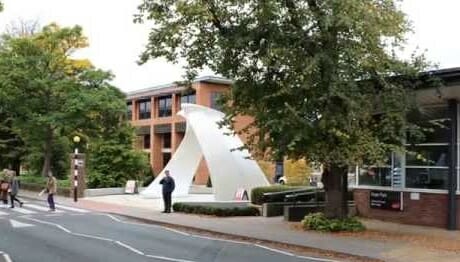
 A new gate has been opened at Hope Park, Liverpool, to replace the tall walls that have historically separated the colleges of Hope University , England. The new architectural structure joins two university schools, one Roman Catholic and the other Anglican, which comprise the first and only ecumenical university of Europe. The exhibition, which was inaugurated on 28 September, was organised by the Ave Arts Centre in Loppiano. The seven artists who work there aim to express, through their artwork, the ideals of unity and universal brotherhood which inspired Chiara Lubich. The partnership with the art studio was born from a visit by Vice-Chancellor and Rector, Dr. Phillay to the Internationanl Centre of Loppiano for a conference at Sophia University Institute. At the dedication ceremony of the New Gate, the Vice-Chancellor explained the inspiration for the shape and design of the gate which stems from the tradition of the Maori people in New Zealand, whose villages had “Waharoa,” an open gate that became a symbol of the village and a sign of openness and welcome to guests and visitors. “In the same way,” continued Dr. Phillay, “this new gate marks the entrance for students and professors into the ‘community of life’ of Hope University, focused – in accordance with the orientation of Cardinal John Henry Newman, towards a wholisitc cultural and human formation, capable of ‘accepting the value of one’s own academic discipline within the context of all the others.” Nunzia Bertali, from the Italian Consulate, officially inaugurated the New Gate by cutting the ribbon. She said: “What a great occasion and privilege to be asked to inaugurate the New Gate. I can only be proud of this link between England and Italy. It is a fantastic idea and great opportunity to link the two countries.” Watch the video. New Gate, inspiration at the service of unity Sculptress Erika Ivacson from the Ave Centre, described the New Gate in this way: “It is an arch, a bridge that is born from the encounter between two similar yet distinct elements. In the language of sculpture the two distinct forms have reached a harmony and a unity in diversity. Passing through the New Gate, anyone should find themself in a fulfilling experience that points to something greater, to belonging and identity. The Biblical texts inserted on the interior of the sculpture echo the message. And as the plaque at the side of the sculpture states: May passing through this gate each day be a living affirmation of the ecumenical foundations of this univeristy.
A new gate has been opened at Hope Park, Liverpool, to replace the tall walls that have historically separated the colleges of Hope University , England. The new architectural structure joins two university schools, one Roman Catholic and the other Anglican, which comprise the first and only ecumenical university of Europe. The exhibition, which was inaugurated on 28 September, was organised by the Ave Arts Centre in Loppiano. The seven artists who work there aim to express, through their artwork, the ideals of unity and universal brotherhood which inspired Chiara Lubich. The partnership with the art studio was born from a visit by Vice-Chancellor and Rector, Dr. Phillay to the Internationanl Centre of Loppiano for a conference at Sophia University Institute. At the dedication ceremony of the New Gate, the Vice-Chancellor explained the inspiration for the shape and design of the gate which stems from the tradition of the Maori people in New Zealand, whose villages had “Waharoa,” an open gate that became a symbol of the village and a sign of openness and welcome to guests and visitors. “In the same way,” continued Dr. Phillay, “this new gate marks the entrance for students and professors into the ‘community of life’ of Hope University, focused – in accordance with the orientation of Cardinal John Henry Newman, towards a wholisitc cultural and human formation, capable of ‘accepting the value of one’s own academic discipline within the context of all the others.” Nunzia Bertali, from the Italian Consulate, officially inaugurated the New Gate by cutting the ribbon. She said: “What a great occasion and privilege to be asked to inaugurate the New Gate. I can only be proud of this link between England and Italy. It is a fantastic idea and great opportunity to link the two countries.” Watch the video. New Gate, inspiration at the service of unity Sculptress Erika Ivacson from the Ave Centre, described the New Gate in this way: “It is an arch, a bridge that is born from the encounter between two similar yet distinct elements. In the language of sculpture the two distinct forms have reached a harmony and a unity in diversity. Passing through the New Gate, anyone should find themself in a fulfilling experience that points to something greater, to belonging and identity. The Biblical texts inserted on the interior of the sculpture echo the message. And as the plaque at the side of the sculpture states: May passing through this gate each day be a living affirmation of the ecumenical foundations of this univeristy.
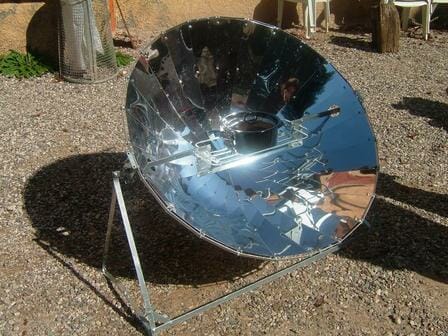
 The Solar kitchen project for Mont-Organisé (Haiti) «was conceived due to the desire to help Haiti counter its social and environmental crisis related to deforestation, through the introduction of kitchens powered by solar energy. This device is based on solar energy concentration that generates thermal energy from the sunlight passed through a lens. The energy is amassed in a thermal “battery” that can withhold the heat for 20 hours, thus enabling cooking to be done also at night. The materials chosen to make the kitchens are sustainable and biodegradable, and the device obviously does not require fuel, explained the report drafted in view of the climate conference in Paris (30 November – 11 December 2015). It is dedicated to a series of excellent experiences in the Italian electrical supply chain to produce or optimise energy without emissions. The project, in fact, was singled out from the “100 Italian energy stories” of Enel and the Symbola Foundation. The Solar Kitchens project for Mont-Organisé (Haiti) was presented last 4 July at the Expo 2015 in Milan by AFNonlus, in collaboration with the National Microcredit Agency, the Federico II University of the Agricultural Dept. of Naples, Tesla IA Ltd. and PACNE ONG. It has now landed in the World Climate Conference (Cop21) of Paris, where political leaders and experts of 190 countries are involved in delineating a programme that can save the planet. «The climate challenge which from 30 November to 11 December will see the world gathered in Paris for the COP21, does not only regard the environment,» the Report underlined, but «is a geopolitical, technological, economic and social challenge. It is a challenge for the future, which we can overcome if we firmly undertake a green economy, and clean and efficient energy.” Enel and Symbola recount a new course consisting of innovation and quality, and research and competitiveness in the search for the ”100 Italian Energy Stories.” It is a programme for sustainable energy undertaken in our country [Italy] by enterprises, research agencies and associations.» AFNonlus (Association of Action for New Families non-profit org.) was inspired by the principles of the Focolare Movement which has been operating for over 30 years in 50 countries to support the disadvantaged families and children through projects of cooperation for development.
The Solar kitchen project for Mont-Organisé (Haiti) «was conceived due to the desire to help Haiti counter its social and environmental crisis related to deforestation, through the introduction of kitchens powered by solar energy. This device is based on solar energy concentration that generates thermal energy from the sunlight passed through a lens. The energy is amassed in a thermal “battery” that can withhold the heat for 20 hours, thus enabling cooking to be done also at night. The materials chosen to make the kitchens are sustainable and biodegradable, and the device obviously does not require fuel, explained the report drafted in view of the climate conference in Paris (30 November – 11 December 2015). It is dedicated to a series of excellent experiences in the Italian electrical supply chain to produce or optimise energy without emissions. The project, in fact, was singled out from the “100 Italian energy stories” of Enel and the Symbola Foundation. The Solar Kitchens project for Mont-Organisé (Haiti) was presented last 4 July at the Expo 2015 in Milan by AFNonlus, in collaboration with the National Microcredit Agency, the Federico II University of the Agricultural Dept. of Naples, Tesla IA Ltd. and PACNE ONG. It has now landed in the World Climate Conference (Cop21) of Paris, where political leaders and experts of 190 countries are involved in delineating a programme that can save the planet. «The climate challenge which from 30 November to 11 December will see the world gathered in Paris for the COP21, does not only regard the environment,» the Report underlined, but «is a geopolitical, technological, economic and social challenge. It is a challenge for the future, which we can overcome if we firmly undertake a green economy, and clean and efficient energy.” Enel and Symbola recount a new course consisting of innovation and quality, and research and competitiveness in the search for the ”100 Italian Energy Stories.” It is a programme for sustainable energy undertaken in our country [Italy] by enterprises, research agencies and associations.» AFNonlus (Association of Action for New Families non-profit org.) was inspired by the principles of the Focolare Movement which has been operating for over 30 years in 50 countries to support the disadvantaged families and children through projects of cooperation for development.

 The Indiction of the Jubilee of Mercy has taken the word “mercy” far beyond Vatican walls, and to the ears of the secular world it can sound outdated and laden with religious significance. The nonbeliever tends from the start to not accept the mystical meanings with which this word is usually invested, especially now as it is raised to disturbing centrality in worldly society. The nonbeliever finds synonyms, or presumed synonyms, that would allow the word to be taken beyond the borders of Christianity: pity, compassion, empathy . . . in a growing confusion that the online dictionaries are not able to reduce. The first impulse is to identify it with “pity,” the sentiment of people with “compassion,” of people who emotionally perceives the sufferings of others as their own and would like to alleviate them (and, by the way, in Christianity the term “pity” is close to the term “mercy”.) Well, then, why not “empathy” which is not a feeling but an ability to fully understand the state of soul of others, to place oneself in someone else’s shoes especially after the discovery by neurosurgeons on the mirror neurons that tends to confirm that empathy does not have its origins in intellectual effort but in the genetic code of the species? Words such as pity, mercy compassion, like all respectable words, will have their positive and negative meanings. Just think of the derogatory meaning of phrases such as: “I feel pity for you;” or “I pity you;” “He needs to be pitied.” What about the misericorde weapon that was used in medie-val times to deliver the death stroke, the “mercy stroke”? You will say that “mercy” is compassion, yes, but “active” compassion that is substantiated by action, by works. And it may be that it represents a fundamental concept, which is key to the Christian life, as the Dr. Cardinal W. Kasper underscores. Well, then you would need to distinguish between a Christian mercy and a secular mercy based on humanitarian values which, while they march side by side and intertwine, nevertheless belong to two different orders that are to be re-spected in their nature. Therefore, it is not a matter of contrasting secular good works with Christian good works, but of “searching for that hidden harmony that brings relief to the world;” and harmony – like dialogue – “is not given in homogeneity, but it lives in diversity. . .” Mario Frontini
The Indiction of the Jubilee of Mercy has taken the word “mercy” far beyond Vatican walls, and to the ears of the secular world it can sound outdated and laden with religious significance. The nonbeliever tends from the start to not accept the mystical meanings with which this word is usually invested, especially now as it is raised to disturbing centrality in worldly society. The nonbeliever finds synonyms, or presumed synonyms, that would allow the word to be taken beyond the borders of Christianity: pity, compassion, empathy . . . in a growing confusion that the online dictionaries are not able to reduce. The first impulse is to identify it with “pity,” the sentiment of people with “compassion,” of people who emotionally perceives the sufferings of others as their own and would like to alleviate them (and, by the way, in Christianity the term “pity” is close to the term “mercy”.) Well, then, why not “empathy” which is not a feeling but an ability to fully understand the state of soul of others, to place oneself in someone else’s shoes especially after the discovery by neurosurgeons on the mirror neurons that tends to confirm that empathy does not have its origins in intellectual effort but in the genetic code of the species? Words such as pity, mercy compassion, like all respectable words, will have their positive and negative meanings. Just think of the derogatory meaning of phrases such as: “I feel pity for you;” or “I pity you;” “He needs to be pitied.” What about the misericorde weapon that was used in medie-val times to deliver the death stroke, the “mercy stroke”? You will say that “mercy” is compassion, yes, but “active” compassion that is substantiated by action, by works. And it may be that it represents a fundamental concept, which is key to the Christian life, as the Dr. Cardinal W. Kasper underscores. Well, then you would need to distinguish between a Christian mercy and a secular mercy based on humanitarian values which, while they march side by side and intertwine, nevertheless belong to two different orders that are to be re-spected in their nature. Therefore, it is not a matter of contrasting secular good works with Christian good works, but of “searching for that hidden harmony that brings relief to the world;” and harmony – like dialogue – “is not given in homogeneity, but it lives in diversity. . .” Mario Frontini